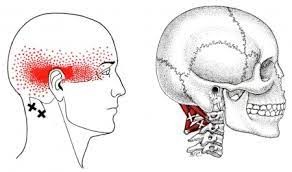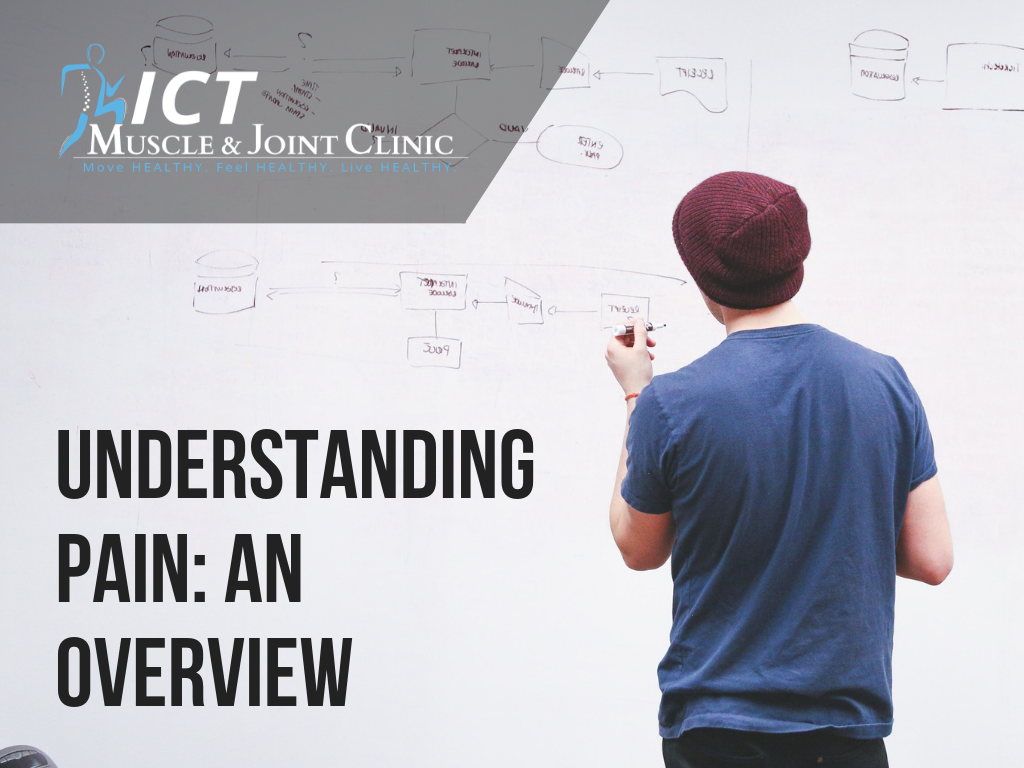Reading this title, you might have considered "local" as a geographical location such as Wichita, KS; however, I am referring to pain that is arising in tissues (muscles, fascia, tendons, ligaments) local to the elbow. There are many causes to elbow pain. Elbow pain can originate from simple issues such as: muscular tension surrounding the elbow, or more complex scenarios arising from the shoulder blade and neck. When the source of the pain is close to the elbow, it is considered local pain. Elbow pain arising from the shoulder or hand is considered regional pain, and when pain is a full body experience, it is considered a global pain mechanism. Whatever the cause may be, taking the time to identify if the pain source is local, regional, or global is the only way to decrease and eliminate the pain as fast as possible.
WHAT CAUSES PAIN TO THE BODY?
There are two, main mechanical (movement-based) pain causes: inflammation and tight soft tissue(s). The medical term for tight soft tissue is ischemia. Soft tissue is everything besides bone (ie hard tissue). The third category, highlighted in our overall overview of pain, is directed to the nerves – specifically the peripheral nerves. These are the nerves outside of your spine.
A Complicated Condition
One of the most debilitating complaints we will see in our office is headaches. This can either be from the intensity, duration, or both. The location can also be variable from person to person, with correlating jaw or neck pain not uncommon. We usually see a combination of these complaints as compounding factors that overlap each other, with each one needing to be addressed to help the patient best.
Stress loading is use of active traction and compression exercises to produce stress in the extremity with minimal motion of the painful joints. Stress loading follows the basics of exercise physiology: Your body adapts in response to demands placed on it. Your response to pain has been changed, so now any stimulus is interpreted as a painful stimulus. Stressful exercise is needed to override what has become "abnormally normal" for that area. An overload is required to achieve a training effect and to break the pain cycle that you and your body are experiencing. This means you need to do something to overload your neural, vascular, sensorimotor, and musculoskeletal systems to break the existing pain patterns your body is feeling.
WHAT IS OVERUSE PAIN?
Overuse pain is one of the most common forms of musculoskeletal pain. Muscles and joints of the body do not receive proper blood flow or oxygen. The lack of oxygen allows acid and chemicals to build up in the muscles and joints, causing local tissue irritation and pain.
What is Dry Needling Therapy?
Dry needling involves inserting a thin, filament needle into a pain point, known as a trigger point, to release tension and promote healing. Trigger points are often thought of as knots in a muscle.
Pain is not always simple. It is easy to understand if we roll an ankle or break a bone what is causing the pain. However, pain is not always a cause and effect event. Pain can come from many different sources and may be simultaneously with other sources at the same time (as shown below). Individuals with multiple sources of pain are often dragged through the healthcare system with little results or given complicated diagnoses such as Fibromyalgia or Chronic Regional Pain Syndrome.
Navigating through pain can be frustrating. This traffic light handout’s goal is to help you understand WHEN to perform your exercises based on your pain symptoms.
BREATHING AND PAIN
When we have pain or become stressed we can develop a rapid or shallow breathing pattern. This breathing pattern can increase tension in the neck, chest, and shoulders. Overtime, this increased tension can lead to trigger point formations which can produce specific pain patterns.
WHAT IS NERVE PAIN?
Nerve pain is typically thought of as radiating pain down the arms or legs with diagnosis such as Sciatica. This pain occurs via the peripheral nerves. Your peripheral nerves connect your brain and spinal cord to the rest of your body. These nerves connect your brain and body to express danger. Anywhere along the path of these nerves a negative stimulus can cause symptoms.
There are three stages of healing following an injury: inflammatory, proliferative, and remodel. Each phase of healing may take different amounts of time depending on the extent of the injury and tissue(s) injured. Recognizing which phase of healing you may be in is important for a speedy recovery. Be sure to ask your chiropractor about which phase of healing you are in during your journey to recovery.
WHAT IS INFLAMMATION?
After an injury, or flare-up of an existing issue, the body produces inflammation. Symptoms of inflammation may include: pain, swelling, redness, increased temperature, and loss of movement. When inflammation sets in, it usually is felt as an increase in 3 points on a 10-point scale, which lasts longer than a day. Once inflammation sets in, the body starts to heal. Pain is your body’s response to inflammation. Pain bring awareness to an area of the body to decrease the odds of re-injury during the early phase of healing.
Strain to the body can be both good and bad. Like all things in life it’s a balancing act. Everyone has heard of a strain/sprain, or over-straining yourself. Usually strain is thought of as bad however strain can also be good. But how do we know when strain is good vs bad? To understand good vs bad strain, we need to understand how strain occurs. Strain to the body is caused in three ways: load, speed, duration.
Heel pain is a common occurrence for everyday individuals to elite long distance runners. There are many reasons for this, such as: landing positions, foot strike patterns, shoe types, or lack of strength/mobility/endurance. The list of associated causes for heel pain is broad. This blog will cover some import factors and shopping tips that you can take advantage of the next time you experience heel pain.
Lacing for Performance
When looking at your shoes, have you ever wondered what the purpose of the nearest eyelet to your ankle is? Many individuals, using this eyelet, state they feel added support. In order to get the maximum amount of support, utilizing this eyelet, there is a specific lacing pattern called the “high 7-eyelet lacing pattern.” According to Hagen and Hennig (1), this pattern for tying your shoes, with a moderate amount of tension, significantly reduces pressure underneath the heel and outer forefoot, as well as reducing the loading rate and the velocity of pronation associated with walking and running. Depending on the running mechanics and strain experienced with walking or running, this technique may reduce the risk of related injuries. Below is a picture series to help guide you through lacing with the high 7-eyelet.












